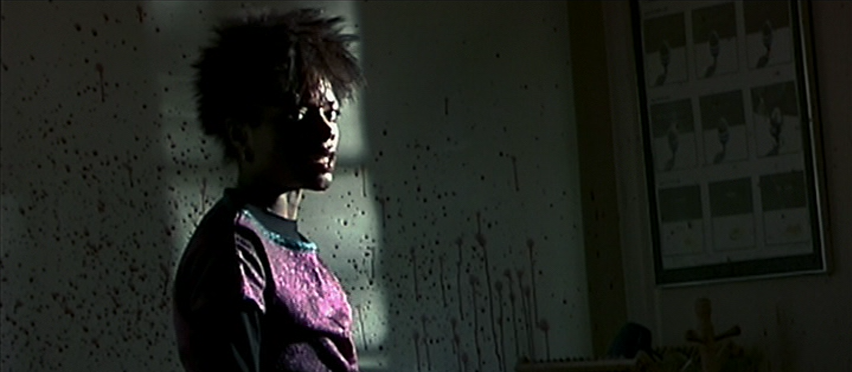
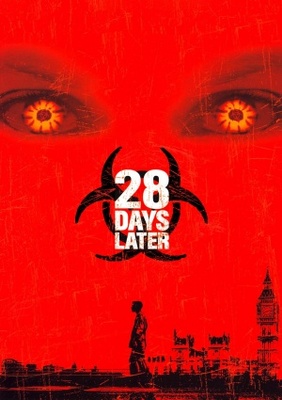
“This is what I’ve seen in the four weeks since infection. People killing people. Which is much what I saw in the four weeks before infection, and the four weeks before that, and before that, and as far back as I care to remember. People killing people. Which to my mind, puts us in a state of normality right now.”
Danny Boyle began his filmmaking career in the 1990s with the low-budget hits Shallow Grave and Trainspotting. After a critically panned adaptation of author Alex Garland’s The Beach, Boyle returned to the low-budget realm with 28 Days Later, based on a screenplay by Garland. An engrossing and innovative take on the zombie genre, the film became a catalyst for its resurgence.
Despite sparking a zombie genre renaissance, 28 Days Later is technically not a zombie film; instead of the undead, the droves of flesh-eaters are living humans infected by a virus that takes effect within twenty seconds of entering the body (I’m going to keep referring to them as zombies though). In the opening scene, a chimpanzee is forced to watch footage depicting acts of human violence at a primate research lab. The researchers are studying chimps that were infected with what they call “rage.” When the chimps are set free by a group of misguided animal rights activists, the virus spreads quickly. The methods of transference are an update on the usual zombie bite, as the virus can transmit via blood (which the infected regularly projectile vomit) coming into contact with an open wound or the eyes.
Four weeks after the escape of the virus, Jim (Cillian Murphy) wakes up naked in a hospital bed, having been knocked unconscious in biking accident. His shouts for help go unanswered, and as he makes his way through the streets of London, he finds that the entire city is deserted. Furniture is overturned; payphones dangle, removed from their cradles; a notice board is cluttered with letters and pictures, indicating the breakdown of communication channels. The editing is smooth and restrained, a stark contrast to the hyper-quick cutting that dominates the later action scenes. Shot on handheld video cameras, the grainy footage gives the film a look similar to that of the “found-footage” genre. Though clearly not presented as such, the action scenes give the viewer a similar sense of immediacy. The false sense of calm is broken when Jim enters a church. He sees a floor strewn with bodies and he is attacked by an infected priest. The zombies in 28 Days Later add another wrinkle to the traditional zombie in that they do not lumber slowly toward their prey—they sprint, climb, and jump. The quick effect of the virus coupled with the zombies’ spry athleticism means survivors must be hyper-alert at all times.
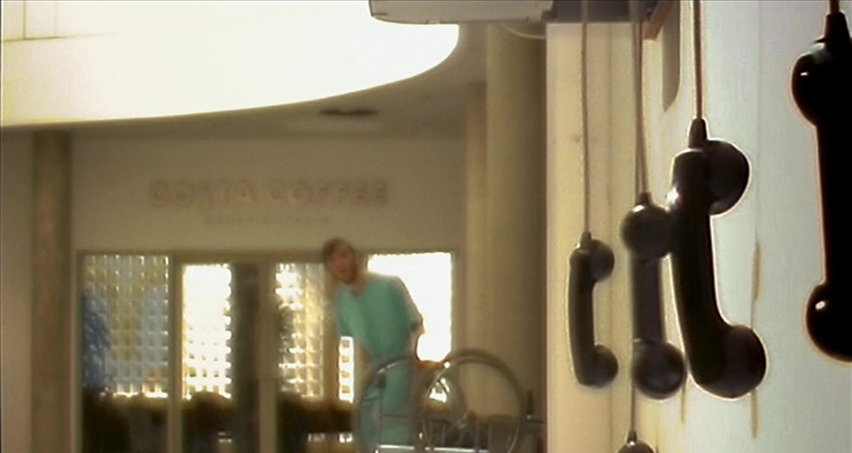
Jim meets two other survivors—Selena (Naomie Harris) and Mark (Noah Huntley)—and the trio treks to Jim’s house and find that his parents have killed themselves, dying next to one another with a note clutched in his mother’s hand. It reads: “Jim, with endless love, we left you sleeping. Now we’re sleeping with you. Don’t wake up.” The film’s careful balance between scenes of emotional resonance and breakneck action is superb. Later that night, Jim is lost in a moment of reminiscence. It is a unique scene, in that it almost appears as if Jim is watching a home video, the footage even grainier than that of the rest of the film. A flickering candle illuminates his face, but held off-screen it imitates the shifting light of a video screen. The poignant moment is shattered when two zombies jump through the glass kitchen door and tackle Jim. Selena and Mark ward off the attack, and Jim—though startled that his neighbors have attacked him—is unharmed. But, when Selena realizes that Mark has been wounded—less than a minute of real time after Jim had been remembering his parents—Selena mercilessly hacks Mark to death with her machete. She makes sure that Jim knows she would do the same to him in a heartbeat if he became infected.
28 Days Later suggests a fragility of social and governmental structures that would result in a societal collapse if we were faced with a large-scale disaster. It is a warning to a culture that is evermore reliant on systems outside of themselves for their sustenance—a gradually atrophied human society dependent upon things they could not recreate themselves. The film began shooting on September 1, 2001—the day of the terrorist attacks in New York City—and was released to viewers still shocked by the failure of the powers that be to prevent such a tragic event from occurring. As news coverage and social media use have increased in the succeeding years, the film’s warning—the potential of losing one’s humanity to uncontrollable rage—seems more apt than ever. In a world where the spread of (mis)information seemingly cannot be stopped, a viral, animalistic rage causing an apocalyptic annihilation of every social structure is a fitting metaphor.
Jim and Selena find and befriend Frank (Brendan Gleeson) and his daughter Hannah (Megan Burns), who are living in a flat, defending themselves with riot gear and collecting rainwater on the roof. Frank’s hand crank radio repeats a message from a military squad offering protection at a blockade near Manchester. This second act is where the film develops its characters and their relationships, and allows the viewer to develop an emotional connection that gives the third act’s heavy action sequences greater heft. The film’s soundtrack works to convey the proper tone shifts, here and throughout. The survivors laugh and joke as they zip around an abandoned supermarket and load up on food as Granddaddy’s lighthearted “A.M. 180” plays in the background. A scene of wild horses galloping through a lush field, unaware and unaffected by the virus, is accompanied by Brian Eno’s exquisite “An Ending (Ascent)”—a song also used to great effect in Steven Soderbergh’s Traffic, and can be found on Eno’s album Apollo, itself a soundtrack for the documentary film For All Mankind.
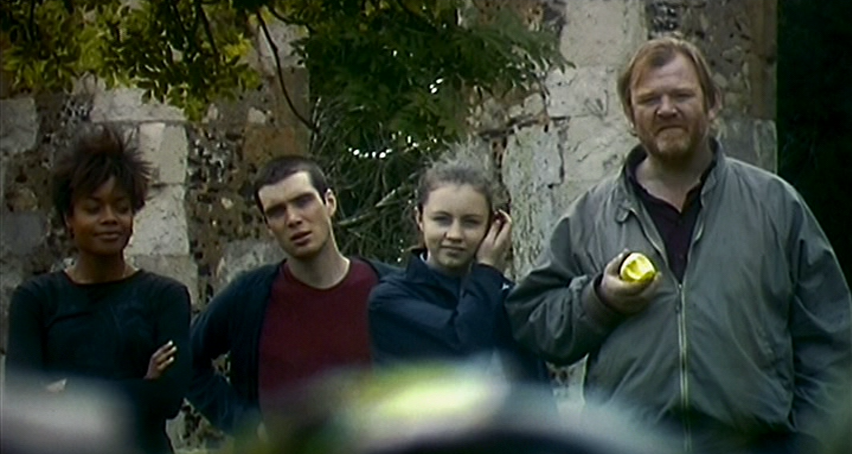
When they reach the blockade, Frank becomes angry when they find it has been deserted. He shouts at a raven pecking at a corpse suspended above him. As it reacts to his outburst, it knocks a single drop of blood from the corpse, which lands in Frank’s eye. In a touching moment, he offers his love to his daughter before pushing her away from him as he morphs into an infected savage. Previously unseen, masked and camouflaged soldiers shoot and kill Frank before he can attack anyone else.
The film’s third act does not quite stick the landing that the first two promised. After the rapid disintegration of society, Selena has given up on trusting anything larger than herself; she has accepted the perpetual state of mere survival that will consume the rest of her life. “Plans are pointless. Staying alive is as good as it gets,” she says. Jim and Frank are of the opposite opinion, still hopeful for humanity’s future, even if it must start with the basic family unit as its only structural element. Due to their contrasting outlooks, the romantic relationship between Selena and Jim takes almost the entire film to develop. When the three remaining survivors are taken to the soldiers compound, we realize the frighteningly incoherent belief systems that have been adopted in modern society. The virus has destroyed the mirage of security, and the barbaric soldiers cling to their half-formed ideologies to guide them back to the comfort they knew. They have concluded that a ruthless propagation of the species is the only solution to their predicament. In a disturbing confession, their leader, Major Henry West (Christopher Eccleston) tells Jim, “I promised them women.” These men have the practical building blocks of the society they knew—hot water, weapons, sanitation, food—but they lack basic humanity. The men resort to the survivalism, without any thought toward empathy or understanding. One exception, Sergeant Farrell (Stuart McQuarrie), seems to have a broader perspective that the others lack, interjecting his thoughts as the men speak of a return to a normal society. “If you look at the whole life of the planet, we… you know, man… has only been around for a few blinks of an eye. So if the infection wipes us all out, that is a return to normality.” Due to his nonconforming viewpoint, he is sent to be executed along with Jim.
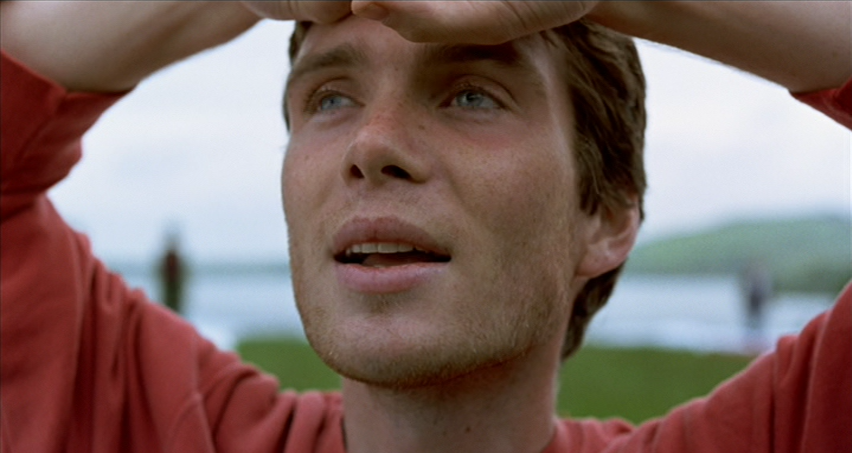
The climax of the film is a blur of adrenaline. Jim escapes his executioners while Selena and Hannah are prepared for their initiation into sexual slavery. While Jim releases Mailer—a leashed zombie that the soldiers keep in the courtyard of their requisitioned estate for study—Selena convinces Hannah to take pills so that she won’t be alert during the impending sexual encounter. The effect of the pharmaceutical influence on Hannah, and the expectation that the bloodied and shirtless Jim has been infected are both used for humor in the climactic scenes. Jim’s malnourished body is invigorated by some primal energy, and he takes down the soldiers one by one. Meek and peaceful throughout the film, he uncharacteristically pins a soldier to the floor, and gouges out the man’s eyes. Covered with blood, he rises and turns to Selena, who stands with a machete held between them. Stupidly, he approaches her without saying anything. Instead of swinging, she allows him to come very close. “That was longer than a heartbeat,” he says, recalling her earlier promise to hack him to death without remorse should she think he had been infected. Sure, it has a dramatic effect, but it seems a bit silly. As they embrace, a stoned Hannah enters the room and smashes a bottle on Jim’s head, thinking that he was biting Selena. As they flee, Major West shoots Jim in the abdomen, and he becomes unconscious. He wakes up twenty-eight days later.
The film’s conflict relies on the differing viewpoints on what constitutes society. The soldiers believe it is the rigid structure that leads to material prosperity and the propagation of our species. While film’s like George Romero’s Night of the Living Dead and Day of the Dead use zombies as a critique of a racist and consumerist culture, the zombies of 28 Days Later can be seen as a culture exhibiting a total loss of self control and personal responsibility. Having studied Mailer, Major West concludes that the zombies will be unable to even feed themselves without help, and so will die out quickly—a fantastic metaphorical representation of the manic, overstimulated, and incompetent masses that populate the modern world and would literally starve to death without a government system to support them. And just like the zombies in the film, these inept multitudes would take the rest of society down with them.
Early in the film, when Jim is confronted with the magnitude of the outbreak, he tries to reassure himself. “What do you mean there’s no government? There’s always a government, they’re in a bunker or a plane somewhere!” Through his character arc—as he gradually realizes that a rigidly defined structure is not the true foundation of civilization—the film posits that the institutions which appear immovable and eternal are illusory, giving only the feeling of security but not providing it in actuality. Instead of relying on a government to provide the basis of civilization, our civilization should be built upon our intrinsic empathy for one another. On its surface, the film is scary; it’s allegory is even more terrifying.